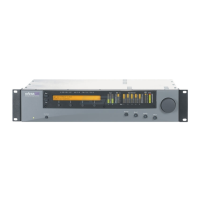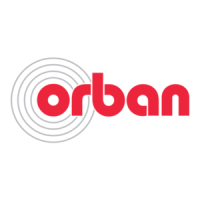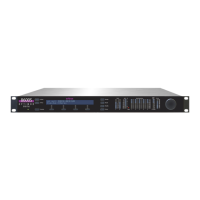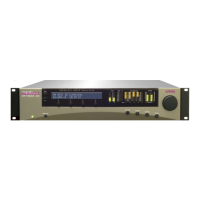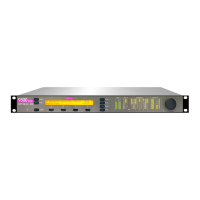Section 1 Introduction Page: 25 About this Manual Explains manual navigation features like hyperlinks, bookmarks, and text search.
User-Friendly Interface Describes the processor's interface with LCD, LEDs, buttons, and rotary knob for easy operation.
Flexible Configuration Covers analog and AES3 digital I/O, internal stereo encoder, and subcarrier inputs for versatile setup.
Controllable Discusses remote control options via GPI, PC Remote software, and automation features.
Presets in OPTIMOD-FM Explains the two types of presets: Factory Presets and User Presets for system configuration.
Studio-Transmitter Link Discusses different types of STLs and their implications for signal transmission from studio to transmitter.
Transmission Levels Covers the transmission engineer's concern with peak levels to prevent overloading.
Line-Up Facilities Details the built-in metering and test tone capabilities for system calibration.
EAS Test Provides methods for running EAS tones and data through the 8300.
EXTENDED WARRANTY Details options for purchasing an extended warranty period for the product.
Section 2 Installation Page: 49 Unpack and inspect Instructions for safely unpacking the unit and checking for any physical damage or missing items.
Connect to a computer Instructions for connecting the unit to a PC via serial or Ethernet for remote control.
8300 Rear Panel Describes the various connectors and switches located on the rear panel of the 8300 unit.
Grounding Explains proper grounding techniques for optimal performance and safety.
8300 Front Panel Describes the controls and display elements on the front panel of the 8300 unit.
Quick Setup A guided setup procedure for basic analog-FM facility configuration.
Set pre-emphasis. Instructions for selecting the correct pre-emphasis setting (50µS or 75µS) for your country.
Set external AGC mode. Configuration for using an external AGC device, disabling the 8300’s internal AGC if necessary.
Set operating levels. Procedures for setting input levels to optimize the Automatic Gain Control (AGC) operation.
Section 3 Operation Page: 119 8300 Front Panel Overview of the front panel controls including display, buttons, knob, and status indicators.
Basic Modify Describes the initial level of control over stereo enhancer, equalizer, and dynamics.
Full Modify Explains the detailed front-panel control level for dynamics processing.
Advanced Modify Outlines advanced controls accessible only via PC Remote software for fine-tuning.
Equalizer Controls Details the parameters for bass, midrange, and high-frequency equalization.
AGC Controls Covers the Automatic Gain Control settings for managing audio levels and consistency.
Clipper Controls Describes controls related to clipping and limiting, including bass clipping and final clipping.
Section 6 Technical Data Page: 219 Specifications Presents key technical specifications to aid engineers in installation and comparison.
Performance Details performance metrics for analog and digital I/O, including frequency response and noise.
Installation Provides technical data related to the unit's installation parameters like delay and connectors.
Delay Specifies processing delay times for different structures and relative delay between HD and FM chains.
Analog Audio Input Technical details on configuration, impedance, level, and connectors for analog audio input.
Analog Audio Output Technical specifications for analog audio output, including configuration, impedance, and level.
Digital Audio Input Details on digital audio input configuration, resolution, and connectors per AES3 standard.
Circuit Description Provides a detailed breakdown of the unit's internal circuitry and functional blocks.
Control Circuits Describes the microprocessor-based control circuit and its communication pathways.
Input Circuits Covers the circuitry for interfacing analog and digital audio inputs to the DSP.
Output Circuits Describes the circuitry for interfacing the DSP to the analog and digital audio outputs.
Analog Output Stages Explains the filtering, amplification, and driver stages for the analog audio outputs.
Abbreviations Provides a glossary of abbreviations used throughout the manual.
Parts List Lists the various parts used in the 8300 unit, including component identifiers.
Base Board Lists parts associated with the base board assembly.
CPU Module Lists components belonging to the CPU module.
RS-232 Board Lists components for the RS-232 serial interface board.
Power Supply Technical data and component list for the unit's power supply.
DSP Board Lists components associated with the DSP board.
